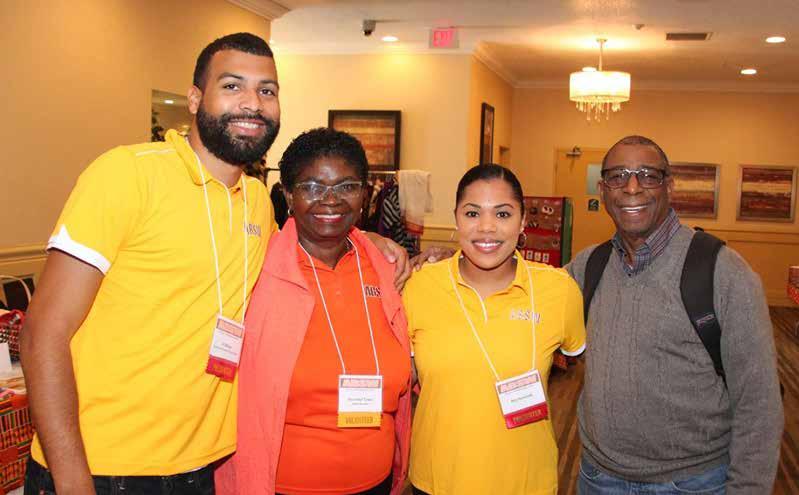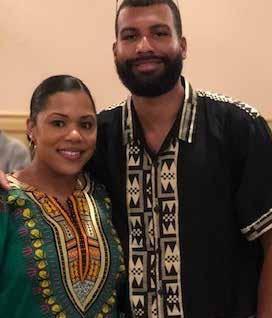
4 minute read
DIVERSE COMMUNITIES
THEIR EDUCATION, OUR FUTURE
Changing the narrative of the school-to-prison pipeline in Nova Scotia schools
Advertisement
BY BRIA SYMONDS & JJ WILSON
WHY SCHOOL PIPELINING?
As we finished our first semester of our introduction into social work, we realized that we both have a passion for working with youth and improving correctional facilities. The discussion of school-to-prison pipelining was appearing more frequently in social settings and we felt it was time to start doing research. Originally our research around the school-toprison pipeline was for a class project that unpacked critical race theory (CRT). With CRT originating in America, much of our research was American based. We saw similar outcomes of pipelining happening in Nova Scotia with Black students being mistreated in classrooms, and thought a change needed to happen.
The school-to-prison pipeline is a phenomenon that has been happening for decades, but the term started to be used in the 2010s. Our prison systems are disproportionately filled with people of African descent and the pipeline is a large contributing factor to this. In schools, Black youth learn from a Eurocentric curriculum, receive harsher discipline penalties, and face discrimination on a daily basis. These factors lead to Black youth being pushed out of the school system and into the prison system because of a lack of opportunities to gain meaningful employment. These issues are seen across North America but have a specific impact on African Nova Scotian (ANS) youth. Although there is a lack of research on ANS students in correlation to school pipelining, we knew beneficial research would come from first voice stories.
RESEARCH
We spent many hours collecting qualitative research on the school-to-prison pipeline in Nova Scotia. We analyzed articles, books and documentaries, attended public schools to speak with Black students, and facilitated workshops and youth summits to hear personal stories. The information gathered was helpful in terms of educating others on what the schoolto-prison pipeline looks like in Nova Scotia and how it is impacting Black students. However, some of the information we came across was not surprising to us as we are ANS students ourselves and continue to face these negative factors in a university setting.
FINDINGS
The articles produced around ANS students in public schools stated that ANS students and Black students in general are failing academically due to systematic oppression in public schools. Learning from a Eurocentric curriculum is pushing Black students to marginalization and lack of Africentricity is impacting Black youths’ identity.
Black students described they feel underrepresented, neglected, targeted, angry, unheard, and uneducated on their own Black history. We had many vulnerable conversations with Black youth and Black educators and understand it is extremely difficult to excel in an environment that is not made for you to succeed. In order to subside the school-to-prison pipeline impact, several changes need to be made within our school system.

JJ Wilson, Ronke Taiwo, Bria Symonds and George Willis at the ABSW conference after JJ and Bria’s workshop on the SchoolTo-Prison Pipeline.
Photo by George Thomas Bernard, contributed by authors
CHANGING THE NARRATIVE
Firstly, there needs to be more diverse representation among teachers. Having a Black teacher allows the students to feel much more comfortable in the classroom. Africentrism should be introduced and implemented into the curriculum. Not only does it allow Black students learn about their culture and be in the center of their education, it allows those from diverse backgrounds to become more culturally aware.
As it stands currently, Black History Month is the only time of the year when Black culture is focused on in schools, and even that only scratches the surface.
We believe youth should have the option of enrolling in Africentric or Indigenous studies the same way the current school system allows children to be in English and French immersion. This would allow for students from various backgrounds to have an education they feel fits their needs.
Finally, we would like to build towards the implementation of an Africentric school in Nova Scotia. This would include a Black faculty and curriculum. This idea has been proposed in Nova Scotia previously, but has not received positive response from the public. However, if Black students continue to face marginalization, exclusion, underrepresentation, and discrimination in the classroom, drastic measures need to take place to ensure that ANS students are being valued and reaching their full potential.

Bria Symonds and JJ Wilson
Photo contributed by authors
BRIA SYMONDS is a professional student in her last year of Social Work at Dalhousie University. (BSW), and has a B.A in women’s studies and family studies from MSVU. She is an African Nova Scotian community advocate who works on many community projects. Bria has also conducted research around Black Feminism and racial factors impacting the achievement gap in schools. Bria hopes to further her social work education and continue to work in marginalized communities.
JJ WILSON obtained his B.A. in sociology with a minor in philosophy from Dalhousie University in May 2017. After taking a year off school following this degree to work with underprivileged youth in a place of safety, he realized his passion for social justice and working with marginalized populations. JJ is now in his last year of his Bachelor of Social Work and plans to further his social work education. JJ works closely with African Nova Scotian youth in community and educational settings.

JJ Wilson, Bria Symonds, Ashely Hill, Vanessa Gray, Vanessa Thomas, Angelina Simmonds at Dartmouth High School after speaking to students.
Photo contributed by authors









